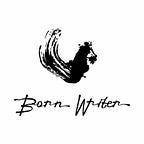Writing for design provocateur: Engzell
Created during summer 2016 alongside our work with Vogue Arabia and Conde Nast, the new portfolio of Alexander Engzell — Bonne Marque’s Founder and Executive Creative Director — stands as a perfect example of our bold and diverse creativity: design, video, development, photography, and, of course, writing. And this article is about my writing.
Between May 2015 and October 2017, every article and written interview in Alexander Engzell’s name was written by me. Alex gave me the license to write without restricting while using his name, and together we created a character (Engzell) that achieved a great deal of publicity (hate & fame) in the ad industry.
Before design began, Engzell and I decided against the lengthy and literary kind of case studies found on Bonne Marque’s portfolio, favouring impactful videos instead. We feel an individual’s portfolio should complement the portfolio of the agency to which they belong, not compete. Such diverse thinking is largely unfound within our industry.
The minimal writing on the preloader, homepage and within titles across the site now carried added pressure. I had to write as powerfully as possible, knowing I had little space to steal the attention from readers and earn their commitment: keep reading, every damn word.
Awaiting me, though, was a brilliant opportunity on the about page, with plenty of space and breathtaking design, and my mind was already brimming with possibility. You wouldn’t believe how tired I feel every time I read “Hi, my name is Tobias Trendlead, and I’m a Web Designer from Paris.” I want to pay such people a visit, remind them of the industry in which they operate (creative), tell them that writing is still alive, and ask them why they make such an effort to design a unique portfolio only to then paste cliche and boredom all over it.
So I sat down to write something new about Engzell. Possibly because I still had the unexercised idea of writing a novel in which the entire narrative spans just three seconds, I first approached the about page with the idea to write about a short period of his life as though it were fiction, conveying all of the information we wanted to within that small segment of time.
Provided I communicated certain things about Engzell to his audience, the nature of the writing could take on any form. So Engzell became my protagonist, treated no differently than a character in one of my stories. He returns home after a day at the office, speaks to his daughter over Skype, goes to his balcony and overlooks the city, then prepares himself for an evening meeting with a client.
What was clear from this draft of the story was the work ethic of the man, how much of his personal life he sacrifices to make the brands with which we partner successful, and his eye for detail as he stands on the balcony. When complete, I was very happy with the writing and knew we were onto something more unique than any other about page in the industry, particularly when Alex pulled the first line from story and turned it into the title: “I love you. Daddy has to work. Hey Ja.”
Alex and I worked on the story, focusing on the smaller details now that we were happy with the body of the story, giving heavy attention to how it looked in design. The classic newspaper layout broken by standalone paragraphs and striking titles is remarkable, not only aesthetically but functionally as well, providing a near to perfect reading experience on both desktop and mobile.
Although we were happy with this version, we were never going to blindly commit to the first option before throwing our full weight behind other ideas. Despite refining this first draft into a complete story, it was still a first option and we were both excited about trying more. Who wouldn’t have been?
So let’s go again. I had just read Murakami’s What I Talk About When I Talk About Running, a non-fiction book about running written by a novelist.
Through his meditations on long-distance running, the reader learns about the nature of this man, his principles and approach to writing. I set about trying to achieve the same thing for Alex, but in my own way, of course.
Appealing to another area of writing with which I am proficient (and therefore likely to compose something of much higher quality), I approached the about page with an academic eye, self-evaluating the writing within the writing, which when explained in this way is a rather difficult postmodern style to grasp without experiencing the entire text oneself.
One example of what I mean by this postmodern self-reflection is when in the first paragraph of this version I reveal Alex’s character by analyzing his choice of title in the design, which at this point remained “I love you. Daddy has to work. Hey Ja.” This version is more of a critical essay than a story, like the previous one. The writing questions itself as it moves through the first-person interior monologue. Here is a short excerpt for those who are interested:
I knew when beginning that this next version would be the final version. And even as I wrote it, I knew it was a winner. It retained the bold nature of the suicide version and still read as a story, but it worked as a biography of Alexander Engzell, the designer and man. It’s honest and makes for a unique about page. See for yourself:
Visit https://engzell.me/ for the real experience and navigate through a hell of our own invention. Oh, and by the way, “There will be noise.”
